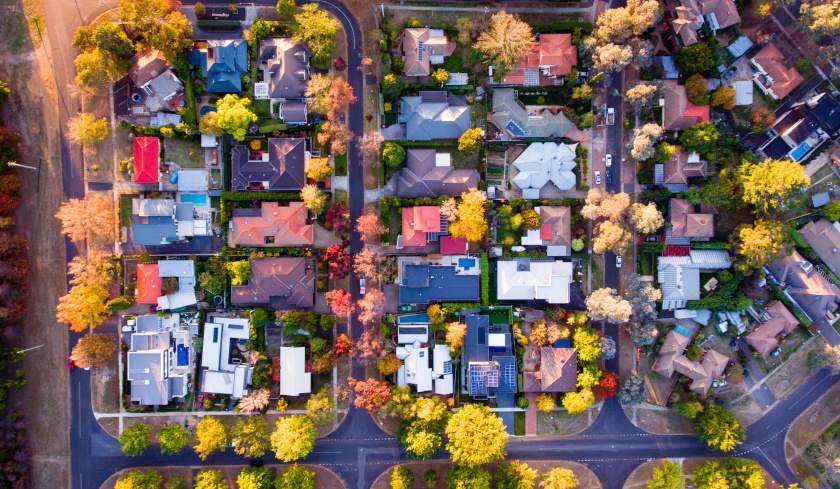5 ways to secure FHBs and consolidate the property market
Keeping first home buyers afloat means protecting the one source of growth in the Australian property market at present, but the federal opposition’s tax changes could soon change this. One property expert explains there’s five better ways to help these buyers.

Current data from the Australian Bureau of Statistics (ABS) puts the proportion of first home buyers above its historical average, currently sitting at 17.9 per cent as of January 2019 – consistent with the average proportion of properties financed to first home buyers over 2018 (also 17.9 per cent).
Peter Koulizos, chairman of the Property Investment Professionals of Australia (PIPA), said that with strong first home buyer activity propping up the struggling property market, the federal opposition’s proposed changes to negative gearing and Capital Gains Tax could make property even more affordable for first home buyers, but would do so at the expense of the rest of the market.
“I truly believe that first home buyers must get assistance to get into the property market because it is good for them, good for the property market, good for the economy and good for the whole community,” Mr Koulizos said.
“However, there are better ways to assist first-timers than causing everyone’s property price to drop [just] to seemingly make it cheaper and easier for them to get into the market.”
He offered five recommendations to support first home buyers without hitting the wider property market as a result:
1. Open up the FHOG
The First Home Owner Grant aims to provide extra funding for the purchase of a first home, but has been limited to only new properties, which account for just 2 per cent of purchases.
Meanwhile, PIPA research indicates that four in five (80 per cent) first home buyers purchase established properties.
“While restricting the grant to new properties was no doubt a strategy to assist the construction sector, it is very difficult to make housing more affordable for all when you are only focusing on just two per cent of all properties,” Mr Koulizos said.
“State governments should extend the FHOG to include established properties, so we are not forcing first home buyers to buy new dwellings, which are generally found on the urban fringes, or new units, which tend to be tiny apartments.
“It’s unfair that first home buyers are almost being forced to buy a new property, which history shows us also won’t grow as much in value as an existing one.”
2. Restrict the FHOG
While opening up the grant in terms of property type, Mr Koulizos also suggested it be restricted in terms of eligibility: by making it only applicable for “reasonably priced” property, and that it be means tested.
“In other words, it should only be available to those on a reasonable income,” he said.
“Households who are on an annual income of $250,000 per year don’t need as much assistance as those who are on $70,000.”
3. Raise the FHOG
The FHOG has lagged behind the rate of housing price increases in recent years.
For example, when it was introduced in 2000, the NSW FHOG was at $7,000, which comparised to a Sydney median house price of $287,000. However, fast track 19 years, and property prices have increased by a much greater rate than the grant– notwithstanding temporary boosts such as during the GFC or to stimulate the building sector.
The original $7,000 grant was about 2.4 per cent of the Sydney median house price of $287,000 in 2000.
Today in 2019, the grant is now at $10,000 and only applicable for new property, but Sydney’s median house price has shot up to $840,000.
“It’s clear that the grant needs to be increased to reflect today’s property prices, not what they cost nearly two decades ago,” Mr Koulizos said.
“Also, a Productivity Commission report found long ago that grants do not increase property prices by the same amount.
“The FHOG’s function has always been to help first-time buyers save a deposit.”
4. Give FHBs interest free loans
An alternative to changing for FHOG operate is to instead give first home buyers an interest free loan, Mr Koulizos said, as it could be more easily funded than a grant.
Mr Koulizos hypothesised that it could assist first home buyers to save a 20 per cent deposit and avoid paying lenders mortgage insurance.
“When the first home owner sells their property, they need to pay back the amount they borrowed,” he said.
“If they sell their property in 30 years, the amount they pay back will seem insignificant, but for those who sell within, say, 10 years, the payback is still a reasonable amount.
“This money can then go back into a pool of government funds that is used specifically for interest-free loans for other first home buyers.”
5. Shared equity schemes
Mr Koulizos’ fifth suggestion was to set up shared equity schemes, which are gaining traction in some states already.
Under a shared equity scheme, the government, when selling a property it owns, would retain a share of the property.
“Instead of selling on the open market, they make their homes available to purchase to a certain section of the market, who need to meet income and asset criteria, for, say, $400,000 and the state government retains $100,000 equity,” Mr Koulizos explained.
“In this example, the government has a 20 per cent share of the property.
“The purchaser of the property can either buy out the state government’s share at some stage or, alternatively, they need to give them 20 per cent of the proceeds when the property is sold.”
